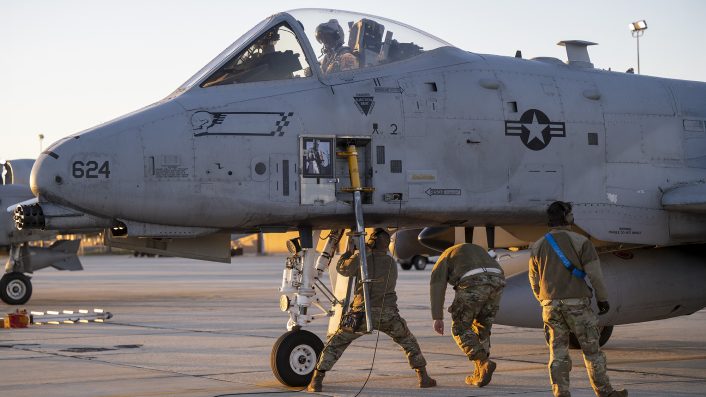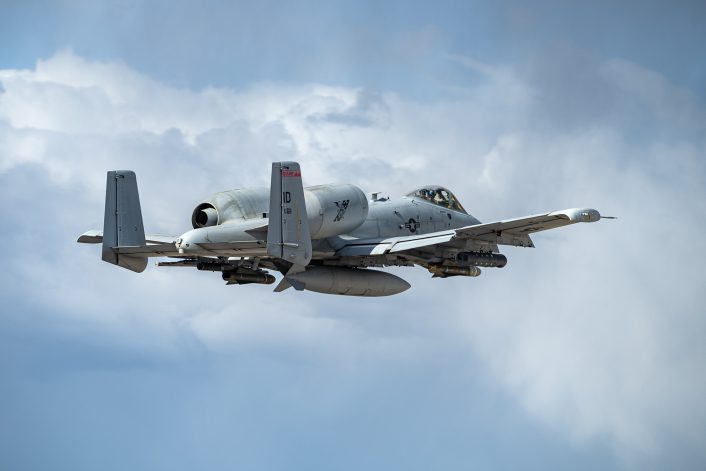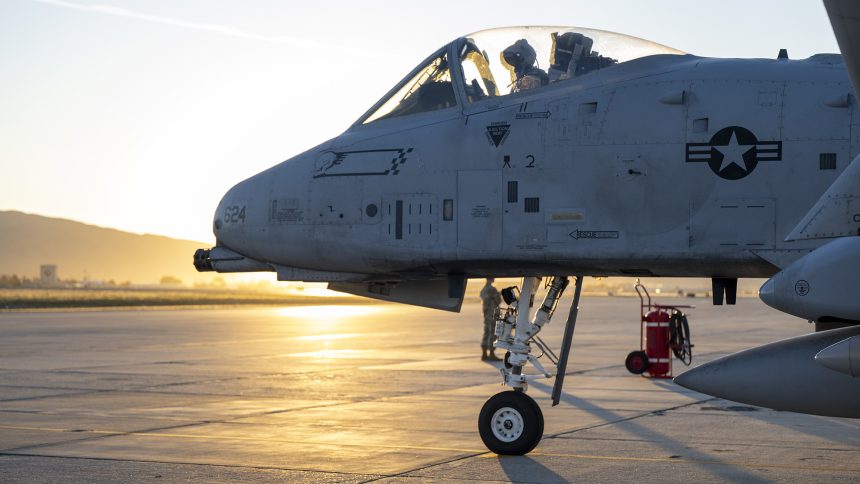With the first Warthog sent to the Boneyard, Idaho ANG enters a new chapter while honoring three decades of A-10 Thunderbolt II heritage.
The 124th Fighter Wing of the Idaho Air National Guard has officially started divesting its A-10C Thunderbolt II aircraft, with the first jet departing Gowen Field, Idaho, on May 27, 2025. The aircraft is now headed to the 309th Aerospace Maintenance and Regeneration Group (AMARG) at Davis-Monthan Air Force Base, Arizona, also known as the “boneyard.”
The move marks the beginning of a significant transition for the unit as part of the U.S. Air Force’s broader plan to phase out the iconic close air support platform. The Air Force intends to retire all A-10s by the end of the decade, shifting resources toward 5th and 6th-generation platforms. The divestment process, however, is being carefully managed to avoid a sudden capability gap.
“This aircraft has shaped not only how we fight, but who we are as a wing,” said Col. Ryan Richardson, 124th FW commander and A-10 pilot in a public release. “It’s helped forge a culture of toughness, precision and purpose.”
Although the Idaho unit has begun sending its A-10s to AMARG, it is also receiving Thunderbolts from other units to maintain a complete fleet during the transition. For now, the flying mission continues uninterrupted. As explained by Col. Richardson, the wing’s focus remains on projecting global airpower while preparing for whatever comes next.

The A-10 has been a staple at Gowen Field, Boise, since the 1990s, and maintainers from the 124th Aircraft Maintenance Squadron have been essential in keeping the aircraft combat-ready throughout the years.
“AMXS has four priority roles in A-10C sustainment: crewing the aircraft, maintaining the avionics, loading munitions for training and combat, and producing airworthy aircraft for the 190th Fighter Squadron,” said Lt. Col. Scott Walker, 124th Maintenance Squadron commander. “It’s a team effort across the Maintenance Group—every shop is integral to mission success.”
Although the divestment has long been anticipated, the moment is still emotional for those who have worked on the aircraft.
“We are saddened that the day finally arrived but are still excited for our present and future mission,” Walker said. “We are ready for whatever comes. But our day-to-day nucleus is continuing to fly the aircraft we have and prepare for whatever is asked by our Nation and State.”
The retirement of the first A-10 of the 124th FW, comes two months into a deployment of the unit to the CENTCOM AOR (Area Of Responsibility): 300 airmen and “multiple” A-10 Thunderbolt II aircraft from the Idaho Air National Guard began the new tour of duty in the Middle East on March 29, 2025. The 124th Fighter Wing has a long history of overseas deployments, having supported combat operations throughout Southwest Asia. The unit’s largest recent deployments took place in 2020 for Operation Freedom’s Sentinel and in 2016 for Operation Inherent Resolve. Its track record also includes participation in earlier missions such as Operations Enduring Freedom, Iraqi Freedom, and Southern Watch.

The decision to retire the A-10 has been controversial, with critics arguing that no current platform can match the Warthog’s ability to provide close air support in austere environments. Renowned for its effectiveness in close air support, the Warthog has played a critical part in shielding ground forces during numerous operations. Continuous upgrades, including advanced weapons and avionics, have ensured its continued relevance on today’s battlefield.
The distinctive sound of the GAU-8 Avenger cannon has become a symbol of battlefield protection. More than just a recognizable noise, it represents the aircraft’s life-saving capabilities. However, as previously reported by The Aviationist, the USAF has defended the decision by emphasizing a shift toward contested environments where survivability and sensor fusion are paramount.
In recent months, other units such as the 355th Wing at Davis-Monthan and the 122nd Fighter Wing in Indiana have also begun divesting their A-10s. The Air Force has stated that airmen currently assigned to A-10 units will be retrained and re-assigned to other platforms and missions. Meanwhile, portions of the A-10 community will continue flying the aircraft as long as they remain in service elsewhere.
The next chapter for the 124th Fighter Wing is the transition to the F-16 Fighting Falcon. This change is intended to better align Air Force capabilities with the objectives of the National Defense Strategy. It will also allow the wing to continue drawing on its extensive experience in fighter operations and maintenance once the A-10 Thunderbolt II is phased out, a process scheduled to begin in the fall of 2026.
The selection of Gowen Field for the F-16 mission followed a detailed evaluation of the base’s suitability. Factors considered included existing infrastructure, community backing, environmental impact, and overall cost.
Based on the assessment done in 2023, the first F-16s are projected to arrive at the base by spring 2027.









